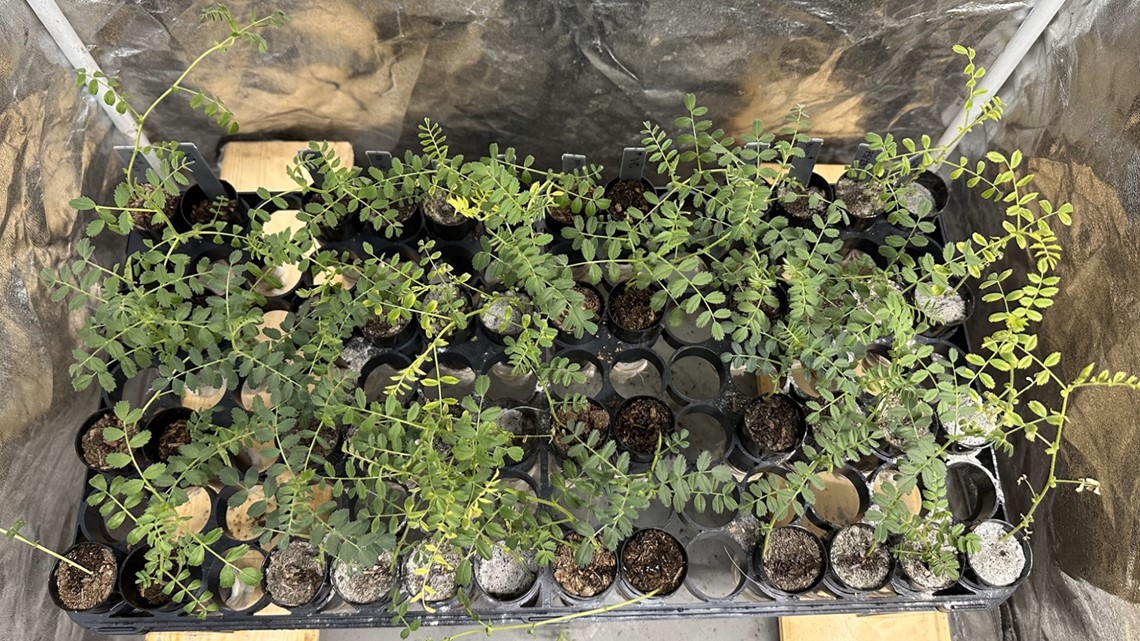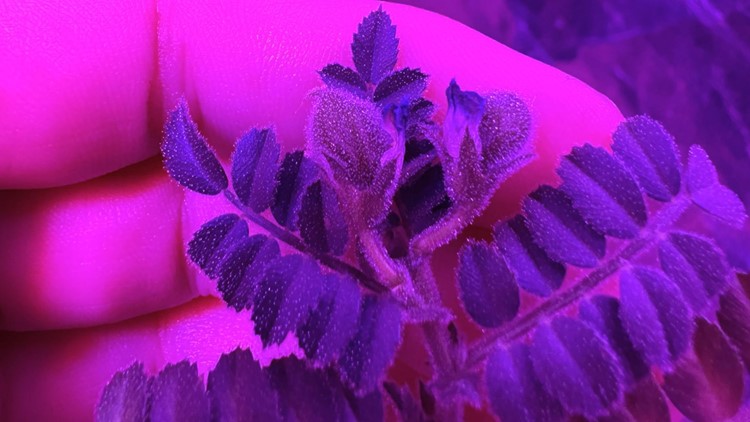COLLEGE STATION, Texas — Over the past few years, alternatives to the foods we regularly consume have become more popular and widespread. This trend will likely continue the years progress as more options become available.
However, what hasn't been explored is the thought of outsourcing our food from an entire other planet. That recently changed thanks to Jessica Atkin, a Texas A&M College of Agriculture and Life Sciences graduate student in the Department of Soil and Crop Sciences who produced the first-ever moondust-grown chickpeas.
Atkin collaborated with Brown University doctoral candidate Sara Oliveira Santos to make the breakthrough happen with simulated moondust that mimics what can be found on the moon due to the limitations of what is available to experiment with on Earth. With the guidance of multiple other academic minds from Texas A&M and Washington State University, they were able to develop a mixture that would simulate soil containing up to 75% moondust that managed to produce chickpeas.
The implications of the breakthrough are staggering, as it can allow for astronauts and those on missions to the moon to cut down on the prepackaged foods they usually take with them to space.
“The Moon doesn’t have soil like Earth does,” Atkin said in an article on Texas A&M Today. “On Earth, the soil has organic material filled with nutrients and microorganisms, which support plant growth. Those are missing on the moon. This adds to other challenges, such as reduced gravity, radiation and toxic elements.”
Through soil regeneration processes that we see on Earth, soil fungi and worm manure were combined to create a compost that isolated harmful things to plants inside the soil, allowing them to grow without the threat of being exposed to too many toxins that would otherwise make the plants unable to grow in the soil.


It was noted that chickpeas were tested because they are legumes that form "beneficial relationships" with fungi, and are an efficient source of protein that uses less water and nitrogen than other food crops.
However, the chickpeas--which take around 100 days to be produced on Earth--took about 120 days to mature, and the plants had showed symptoms of stress as well. There are still many things to be explored, discovered, investigated, and re-tested, but the breakthrough is significant because it could lead to a long-term waste solution, according to Atkin.
Click here to read the original article on Texas A&M Today.
Also on KAGS:



